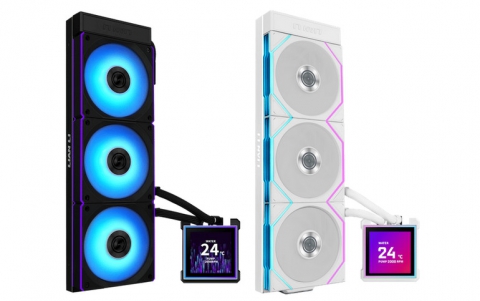
Intel Details Strategy For Data Centers
Today at the Intel Developer Forum (IDF), Diane Bryant, Intel vice president and general manager of the Datacenter and Connected Systems Group, outlined Intel's strategy to deliver new technology - from computing to fabric - that will enable a "new generation" of data centers and devices.
Intel announced a unique matchmaking program called Intel Cloud Finder that promises to speed the search and selection of cloud service providers. Intel Cloud Finder helps to simplify that process with on-line tools and resources that can reduce a lengthy search process, and share information on best practices and strategies for deploying a public cloud.
Intel has collaborated with cloud services providers to offer an assessment of their services against key criteria such as security, usability, quality, availability, technology and the specific business aspects of their offering. At IDF, the program went live to the public enabling enterprise IT decision makers to use the information for research, comparison and procurement of public cloud services for their businesses. The program is underway with cloud service providers including Applied Innovations, Atos, Dimension Data, Expedient, GoGrid, Joyent, MetaScale, NaviSite, QTS, Rackspace, Savvis, SoftLayer, Tier 3 and Virtustream. It complements the Intel Cloud Builders program that was introduced over 2 years ago to provide reference architectures for Intel's customers wishing to accelerate the build-out of cloud infrastructure.
Intel also today announced the Intel Intelligent Systems Framework, a set of interoperable solutions designed to enable connectivity, manageability and security across devices. The framework eliminates the need for hardware and software integration and frees time to focus on unlocking the data that exists on intelligent systems.
Intel also announced today that it is working with Amazon Web Services to take advantage of servers based on Intel Xeon processor E5 family in deliver HPC services for big data analytics in the cloud. Amazon Web Services also discussed how it is allowing customers of different sizes including NASA, Yelp and many others to access their computing cluster, one of the top 500 supercomputers in the world, using their public cloud service to deliver big data analytics.
Intel today also provided insight into two upcoming Intel Xeon processors designed for the data center:
- Intel Xeon processor E5 family. Intel announced that the next update to the Xeon processor E5 family, formerly codenamed "Ivy Bridge-EP," will be based on Intel's 22nm manufacturing process that includes the world?s first production 3-D Tri-Gate transistors, and is expected to be in production in 2013. These processors are aimed to offer high performance, energy efficiency and hardware-based security features such as Intel Secure Key.
- Intel Xeon processor E7 family. Based on Intel's 22nm manufacturing process, the next generation of the Intel Xeon processor E7 family, formerly codenamed "Ivy Bridge-EX," is expected to be in production in 2013. The additional benefits expected with this processor family include increased performance, new advanced reliability features as well as enhanced hardware-based security features such as Intel Secure Key and Intel OS Guard.
After acquiring the assets of Cray, QLogic and Fulcrum, Intel is positioned to deliver fabric technology innovation and CPU platform integration. These assets deliver interconnects, fabric management and software, high radix and low radix switch products, Ethernet products and platform expertise. Intel is already shipping its QDR HCA and switch systems that were acquired from Qlogic, optimized for HPC.
Intel also announced today the availability of the Seacliff Trail customer reference board for Software Defined Networks (SDN). Seacliff Trail uses the SDN-optimized Intel Ethernet FM6764 switch silicon, which provides unprecedented frame parsing capabilities and programmable pattern matching tables at ultra-low latencies. The Intel Ethernet FM6764 supports OpenFlow v1.0 with support for extensions such as VxLAN and NVGRE. Along with the Seacliff Trail Reference design, Intel will provide a software framework from Wind River to assist customers in developing SDN solutions.
Intel has collaborated with cloud services providers to offer an assessment of their services against key criteria such as security, usability, quality, availability, technology and the specific business aspects of their offering. At IDF, the program went live to the public enabling enterprise IT decision makers to use the information for research, comparison and procurement of public cloud services for their businesses. The program is underway with cloud service providers including Applied Innovations, Atos, Dimension Data, Expedient, GoGrid, Joyent, MetaScale, NaviSite, QTS, Rackspace, Savvis, SoftLayer, Tier 3 and Virtustream. It complements the Intel Cloud Builders program that was introduced over 2 years ago to provide reference architectures for Intel's customers wishing to accelerate the build-out of cloud infrastructure.
Intel also today announced the Intel Intelligent Systems Framework, a set of interoperable solutions designed to enable connectivity, manageability and security across devices. The framework eliminates the need for hardware and software integration and frees time to focus on unlocking the data that exists on intelligent systems.
Intel also announced today that it is working with Amazon Web Services to take advantage of servers based on Intel Xeon processor E5 family in deliver HPC services for big data analytics in the cloud. Amazon Web Services also discussed how it is allowing customers of different sizes including NASA, Yelp and many others to access their computing cluster, one of the top 500 supercomputers in the world, using their public cloud service to deliver big data analytics.
Intel today also provided insight into two upcoming Intel Xeon processors designed for the data center:
- Intel Xeon processor E5 family. Intel announced that the next update to the Xeon processor E5 family, formerly codenamed "Ivy Bridge-EP," will be based on Intel's 22nm manufacturing process that includes the world?s first production 3-D Tri-Gate transistors, and is expected to be in production in 2013. These processors are aimed to offer high performance, energy efficiency and hardware-based security features such as Intel Secure Key.
- Intel Xeon processor E7 family. Based on Intel's 22nm manufacturing process, the next generation of the Intel Xeon processor E7 family, formerly codenamed "Ivy Bridge-EX," is expected to be in production in 2013. The additional benefits expected with this processor family include increased performance, new advanced reliability features as well as enhanced hardware-based security features such as Intel Secure Key and Intel OS Guard.
After acquiring the assets of Cray, QLogic and Fulcrum, Intel is positioned to deliver fabric technology innovation and CPU platform integration. These assets deliver interconnects, fabric management and software, high radix and low radix switch products, Ethernet products and platform expertise. Intel is already shipping its QDR HCA and switch systems that were acquired from Qlogic, optimized for HPC.
Intel also announced today the availability of the Seacliff Trail customer reference board for Software Defined Networks (SDN). Seacliff Trail uses the SDN-optimized Intel Ethernet FM6764 switch silicon, which provides unprecedented frame parsing capabilities and programmable pattern matching tables at ultra-low latencies. The Intel Ethernet FM6764 supports OpenFlow v1.0 with support for extensions such as VxLAN and NVGRE. Along with the Seacliff Trail Reference design, Intel will provide a software framework from Wind River to assist customers in developing SDN solutions.





















